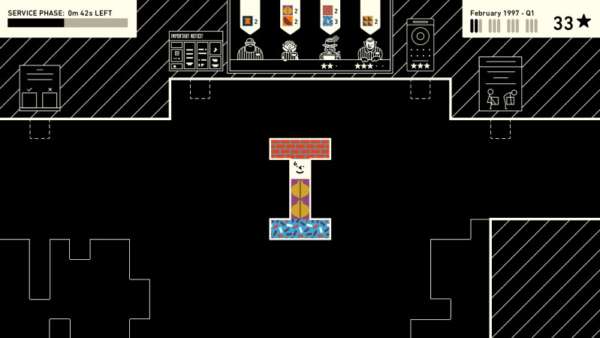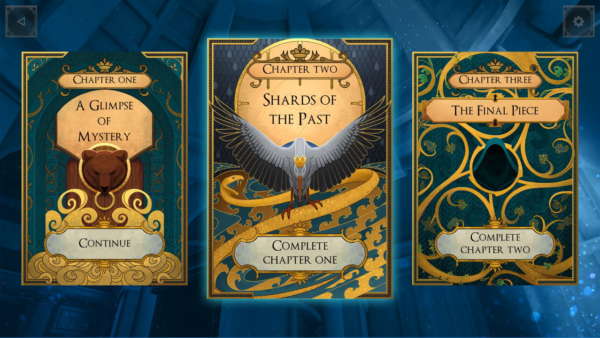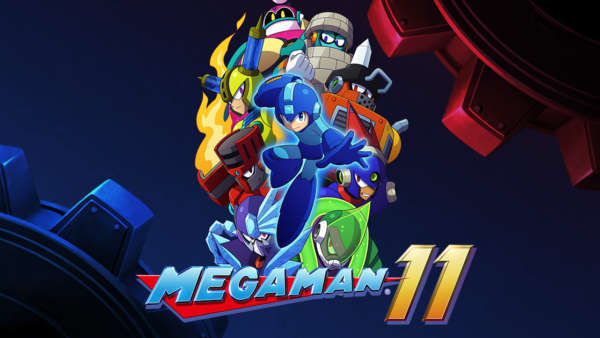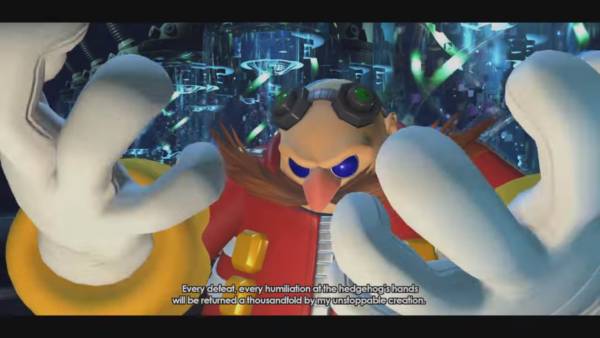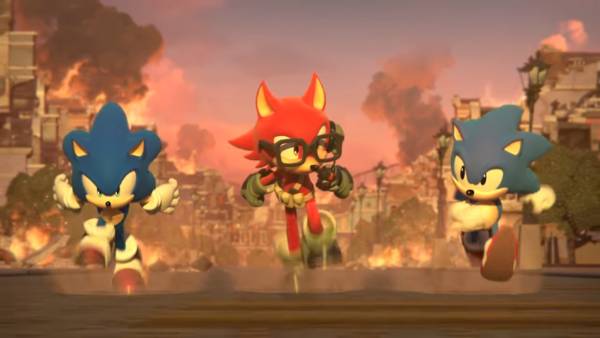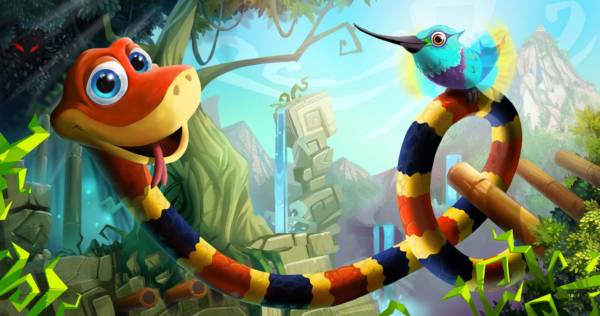When I was growing up in the Nineties, I watched 2D develop into 3D and with that, Platformers took on an entirely new kind of challenge. Instead of making a background for your character to run in front of, entire worlds needed to be created. Thinking back to classics such as Super Mario 64 or Spyro The Dragon reminds me of the incredibly detailed locations and thus, challenges that these worlds presented us with. The Last Tinker: City Of Colors is one of those games. A platformer that gets its strength from the world it is set in.
There is a cartoon charm about everything in The Last Tinker. The all important landscapes and buildings all seem like they have been built by children, and by this I don’t mean to imply that the craftsmanship is shoddy. It has a unique colourfulness that reminded me of opening a pack of jelly beans. Each aspect of the world appears similar in style to objects that you might find in Little Big Planet. The reason behind this is that Tinkerworld (where The Last Tinker is set) is made from paper, glue and paint. This means that the city can look incredibly vibrant.

Each district of the city is assigned a different colour, though only three colours are used. Each colour also carries an emotion that is often a connotation of said colour. For example the red district has been stricken by anger and thus its inhabitants are eager to fight. Green is represented by fear and blue by depression. Each of the three colours/emotions are utilised by Koru, the protagonist of the story, and each holds a power. These powers can be used to manipulate the way you fight. Say you hit someone with a green attack, they will run away in fear, which can be used to not only give you breathing space during a brawl, but can also be used to guide enemies into environmental dangers. Red attacks are your reliable powerful hits. Blue essentially stuns your target allowing you to get behind the enemy so that you may land a critical hit.
The combat felt quite bare at first, but like any good game, the progression through the storyline enabled my Koru to do many more things in the world. With this game being aimed at all ages, I can understand the decision to make fighting simple, and yet the combat, despite its ease to pick up, can actually offer the players quite a satisfying brawl. The system feels a bit like a stripped down version of the Arkham Batman series or Assassins Creeds combat, but with counters, you simply have to hit the enemy who is about to attack you. This means that you are able to jump halfway across the screen to hit any straggling goons, and to keep your combo up high. Along with your basic attacks, each colour allows Koru some sort of ability too. These abilities can be used either during combat, or as a method for solving a puzzle.

Platformers, as a genre, are most often aimed at younger audiences, which can often lead to them being too easy and not that interesting to the older generations. The Last Tinker wants to cater to both audiences, so along with the difficulty options of Kid’s mode, Normal and Hard, there is also an Instant Death mode for all the platformer veterans out there looking for a challenge. And those veterans won’t be disappointed with The last Tinker either. The whole game feels like it belongs in the 90’s (With the exception of the wonderful graphics) when the platformer genre was at it’s peak in the gaming world. As any good Platformer should have, The Last Tinker combines combat, movement and puzzles in ways that bounce off each other, making the gameplay very fluid for the most part. There is also another pillar of platforming games, and that is collectibles. Throughout the game you must keep your eyes peeled for paintbrushes, which you can then give to a character based off of the famous painter , Bob Ross, in exchange for concept art and modifiers such as big head mode, or black and white mode.
The story behind The Last Tinker: City of Colors feels like it is trying to make some very strong points, about prejudice and the way we treat others. It definitely has a feel-good story and strong moral guidelines that seem to have been the focus when writing the story. That being said, The Last Tinker is still all about fun, and the wide host of characters really help bring out the humour within the game. With a looming threat named the “Bleakness” that is slowly sapping the colour out of Tinkerworld you must unite the three seperate colours to stave off the evil with the help of spirits of each of the three hues. There is no dialogue past the narrator at the start and end of the game, but the characters make an array of strange noises that would surely entertain many children. To accompany the sounds are speech bubbles that are literally cardboard signs that pop up to show a character is talking. This approach really adds to the scrapbook style that runs throughout, but these do become a hassle to keep reading as every other person you run past has something to say.

I didn’t find any issues with the gameplay as everything seemed to work as intended. However I did encounter a pretty big problem whilst trying to back track. If you are a player like me, you will like to scour as many corners as possible to ensure no secrets or Easter eggs are left unturned. At one point I was worried I had forgotten something, so I decided to run back the way I had come, only to find that I had somehow trapped myself in a section of the game that had closed itself off to me. This resulted in me restarting that whole chapter, but thankfully it seems the levels are split quite often, meaning I didn’t have to much to redo. This is obviously a bug that would have taken quite some luck to find as the chances of a player turning around when I did does seem slim, however as the player of the game, you should be allowed to backtrack in the section you are residing in.
As far as family games go, The Last Tinker: City of Colors is one that deserves praise, not only for making such an engaging world, but for being a game with a strong message behind it. Another addition to its credit, is the gameplay which is both stimulating for players of all ages, and yet easy to pick up and play. With around 6-8 hours worth of gameplay (and potentially a lot more for younger audiences) it’s not the longest game, but the quality of what is there makes up for the length. It’s a very well polished game that could rely on its beautiful world, yet still has solid gameplay to back it up. The Last Tinker: City of Colors is the kind of game I would have played with my younger brother 15 years ago, and it’s reminiscent of many of the old classics that many of us may have played.
